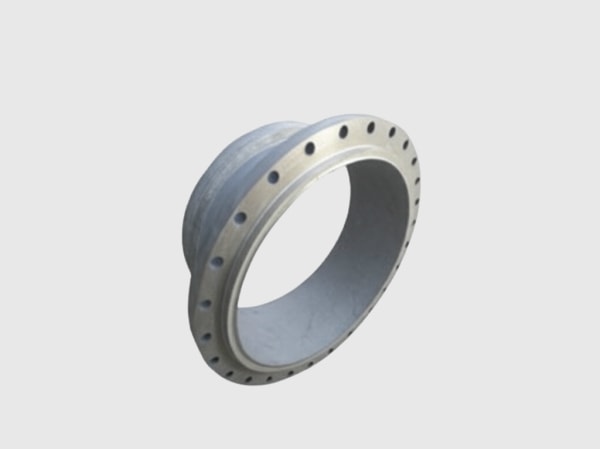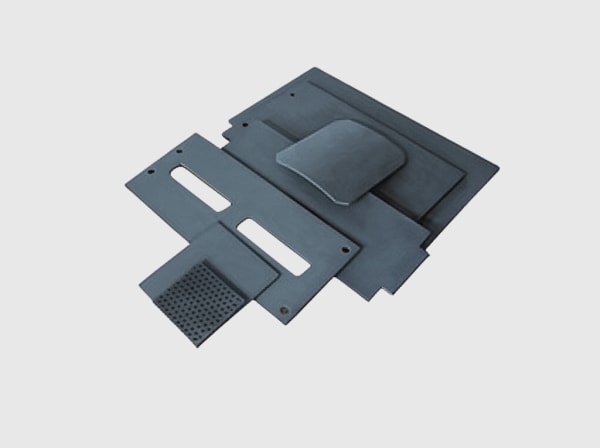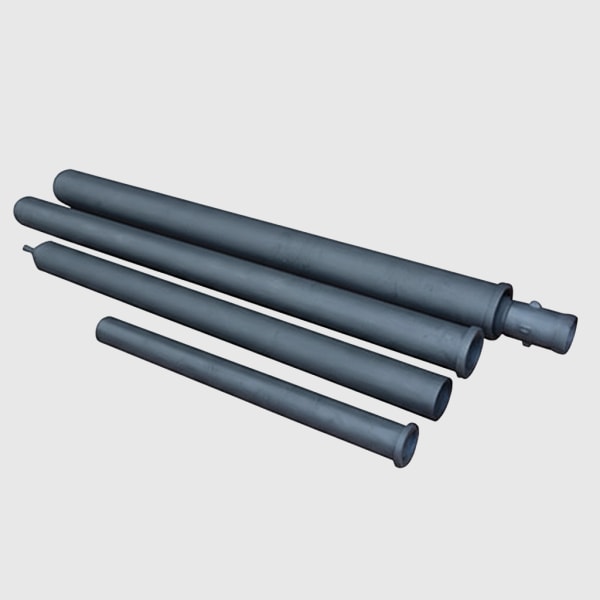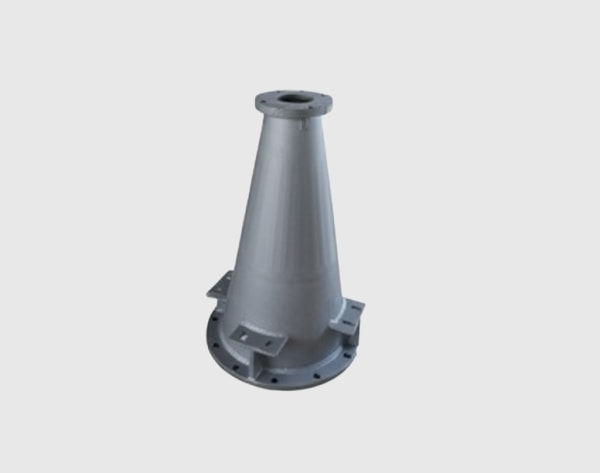SiC in Chemical Processing: Unmatched Resilience
Introduction: Custom SiC in High-Performance Chemical Applications
In the demanding world of chemical processing, material selection is paramount. The relentless exposure to corrosive substances, extreme temperatures, and high pressures necessitates components that can withstand these harsh conditions without failure. Standard materials often fall short, leading to frequent replacements, costly downtime, and potential safety hazards. This is where custom silicon carbide (SiC) products emerge as a game-changing solution. Silicon carbide, a high-performance technical ceramic, offers an exceptional combination of properties that make it uniquely suited for the challenges of the chemical industry. Its inherent resistance to a wide spectrum of chemicals, coupled with its ability to maintain structural integrity at elevated temperatures and pressures, positions SiC as an essential material for enhancing reliability and efficiency in critical chemical processes. The ability to customize SiC components further amplifies its value, allowing for tailored solutions that precisely meet the unique operational demands of diverse chemical applications, from bulk chemical synthesis to fine chemical manufacturing.
The chemical industry is constantly pushing the boundaries of process intensification and efficiency. This drive requires materials that not only survive but excel in increasingly aggressive environments. Custom SiC parts, engineered to specific application requirements, provide a significant upgrade over traditional materials like exotic metal alloys, glass-lined steel, or other ceramics. Whether it’s for pumps, seals, valves, reactors, or heat exchangers, silicon carbide’s durability translates directly into longer service life, reduced maintenance intervals, and improved overall equipment effectiveness (OEE). This introduction will delve into why custom silicon carbide is rapidly becoming the material of choice for engineers and procurement managers seeking to optimize performance and safety in the chemical processing sector.
Main Applications of SiC in the Chemical Processing Industry
The versatility and robustness of silicon carbide allow its use in a wide array of critical components within chemical processing plants. Its superior performance characteristics directly address many of the material challenges faced in this aggressive industrial sector. Procurement managers and engineers in chemical, petrochemical, and pharmaceutical industries are increasingly specifying SiC for applications where reliability and longevity are non-negotiable.
Key applications include:
- Pump Components: SiC mechanical seals, bearings, shafts, and impellers are widely used in pumps handling corrosive, abrasive, and high-temperature fluids. The low friction and high wear resistance of SiC ensure longer pump life and prevent leakage of hazardous chemicals.
- Valve Components: Valve seats, balls, and trims made from silicon carbide offer excellent resistance to erosion and corrosion, ensuring tight shut-off and precise flow control even with aggressive media. This is critical for safety and process efficiency.
- Heat Exchangers: SiC tubes and plates are utilized in silicon carbide heat exchangers designed for highly corrosive environments and high-temperature applications. Their excellent thermal conductivity and resistance to fouling make them more efficient and durable than metallic alternatives in many chemical heating and cooling processes.
- Reactor Components: Linings, thermowells, agitators, and catalyst carriers made from SiC can withstand the extreme conditions found in chemical reactors, including high temperatures, pressures, and corrosive reactants and products. This ensures process purity and operational stability.
- Nozzles and Orifices: For spraying, atomizing, or flow control of abrasive or corrosive fluids, SiC nozzles offer exceptional wear life and consistent performance. This is vital in applications like flue gas desulfurization (FGD) systems or chemical dosing.
- Pipes and Liners: In areas with high wear or extreme corrosion, SiC pipes or SiC-lined pipes provide a durable conduit for transporting aggressive slurries and chemicals.
- Support Structures and Kiln Furniture: In high-temperature chemical synthesis or material processing, SiC beams, rollers, and supports offer excellent strength and stability up to very high temperatures, outperforming metals and other ceramics.
The adoption of SiC components in these applications translates to tangible benefits such as extended mean time between failures (MTBF), reduced maintenance costs, improved process safety, and the ability to handle more aggressive chemical processes that were previously unfeasible with conventional materials.
Why Choose Custom Silicon Carbide for Chemical Environments?
The decision to opt for custom silicon carbide in chemical processing environments stems from its unparalleled combination of material properties, which directly counter the aggressive nature of chemical agents and demanding operational parameters. Unlike off-the-shelf solutions, custom SiC components can be engineered to precise specifications, maximizing their effectiveness in specific applications.
The primary benefits of custom silicon carbide include:
- Exceptional Corrosion Resistance: Silicon carbide exhibits near-universal corrosion resistance, remaining inert to a vast majority of acids, alkalis, and organic solvents even at elevated temperatures. This includes aggressive chemicals like hydrofluoric acid, nitric acid, and strong bases where many metals and even other ceramics fail. Customization allows for the selection of the optimal SiC grade and surface finish to maximize this resistance for specific chemical exposures.
- High-Temperature Stability: SiC maintains its mechanical strength and structural integrity at temperatures exceeding 1400°C (2552°F), and some grades even higher. This makes it ideal for high-temperature reactors, combustion processes, and heat recovery systems common in chemical plants.
- Superior Wear and Abrasion Resistance: The extreme hardness of silicon carbide (second only to diamond among common industrial materials) provides outstanding resistance to wear from abrasive slurries, particulates, and high-velocity fluid flow. Custom designs can incorporate wear-resistant features strategically placed for maximum component life.
- Excellent Thermal Conductivity & Thermal Shock Resistance: SiC possesses high thermal conductivity, which is beneficial for heat transfer applications like heat exchangers. Coupled with a relatively low coefficient of thermal expansion, certain grades of SiC offer good thermal shock resistance, allowing them to withstand rapid temperature fluctuations without cracking – a common challenge in batch chemical processes.
- High Purity and Chemical Inertness: High-purity grades of silicon carbide are available, which is crucial for applications in pharmaceutical and fine chemical manufacturing where process contamination must be avoided. Its inertness ensures that it does not leach impurities into the chemical stream.
- Mechanical Strength and Stiffness: SiC is a very strong and stiff material, maintaining its shape under high loads and pressures. This is important for components like pump shafts, bearings, and structural elements in chemical reactors.
- Design Flexibility with Customization: Partnering with a specialized SiC supplier allows for the creation of complex geometries and tight tolerances tailored to specific equipment and process needs. This ensures optimal fit, performance, and integration with existing systems. Learn more about our customizing support.
By leveraging these advantages, chemical plants can significantly enhance process reliability, reduce unscheduled downtime, improve safety, and often enable more aggressive or efficient process conditions that were previously unattainable with less capable materials.
Recommended SiC Grades for Chemical Processing
Selecting the appropriate grade of silicon carbide is crucial for optimizing performance and longevity in specific chemical processing applications. Different manufacturing processes yield SiC materials with varying microstructures and property profiles. The primary grades relevant to the chemical industry are Reaction-Bonded Silicon Carbide (RBSiC or SiSiC) and Sintered Silicon Carbide (SSiC).
Reaction-Bonded Silicon Carbide (RBSiC / SiSiC)
RBSiC is produced by infiltrating a porous carbon or SiC preform with molten silicon. The silicon reacts with the carbon to form SiC, and any remaining pores are filled with residual metallic silicon (typically 8-15%).
- Advantages for Chemical Processing:
- Good wear and abrasion resistance.
- Excellent thermal conductivity.
- Good thermal shock resistance.
- Relatively lower manufacturing cost compared to SSiC.
- Ability to produce large and complex shapes with relative ease.
- Considerations:
- The presence of free silicon limits its use in highly oxidizing environments at very high temperatures (above 1350°C) and with certain aggressive chemicals like strong alkalis or hydrofluoric acid that can attack the silicon phase.
- Lower ultimate strength compared to SSiC.
- Typical Applications: Kiln furniture, nozzles, wear liners, pump components (where extreme chemical purity is not the primary concern), heat exchanger tubes in moderately corrosive environments.
Sintered Silicon Carbide (SSiC)
SSiC is produced by sintering fine SiC powder at very high temperatures (often >2000°C) with the aid of non-oxide sintering additives (e.g., boron and carbon). This results in a dense, single-phase SiC material with no free silicon.
- Advantages for Chemical Processing:
- Superior corrosion resistance across the widest range of chemicals, including strong acids and bases, due to the absence of free silicon.
- Excellent wear resistance and hardness.
- Maintains high strength at very high temperatures (up to 1600°C or higher).
- High purity options available.
- Considerations:
- Generally higher manufacturing cost than RBSiC.
- Can be more challenging to produce very large or highly complex shapes.
- Lower thermal shock resistance compared to some RBSiC grades, though still good.
- Typical Applications: Mechanical seals for aggressive chemicals, bearings in chemical pumps, valve components, heat exchanger tubes for highly corrosive media, semiconductor processing components, and applications requiring high purity.
Other Specialized Grades
Nitride-Bonded Silicon Carbide (NBSiC) and other advanced formulations may also be considered for niche applications, offering specific property enhancements. However, RBSiC and SSiC are the workhorses for the majority of chemical processing needs.
The following table provides a general comparison:
| Property | Reaction-Bonded SiC (RBSiC) | Sintered SiC (SSiC) |
|---|---|---|
| Max. Use Temperature | ~1350°C (due to free Si) | >1600°C |
| Chemical Resistance (Acids) | Good to Excellent | Excellent to Superior |
| Chemical Resistance (Alkalis) | Fair to Good (Si phase can be attacked) | Excellent |
| Hardness | Very High | Extremely High |
| Thermal Conductivity | High | Moderate to High |
| Thermal Shock Resistance | Very Good | Good |
| Porosity | Typically <1% (filled with Si) | Typically <0.1% (dense) |
| Cost | Moderate | Higher |
Choosing the right grade requires a thorough understanding of the specific service conditions, including chemical composition, temperature, pressure, and presence of abrasives. Consulting with experienced silicon carbide suppliers like Sicarb Tech is crucial for making an informed decision.
Design Considerations for SiC Components in Chemical Equipment
Designing components with silicon carbide for chemical equipment requires careful consideration of its unique material properties, primarily its hardness and brittleness, alongside its excellent resistance to chemicals and heat. Effective design ensures manufacturability, maximizes performance, and enhances the longevity of SiC parts in demanding chemical environments.
Key design considerations include:
- Managing Brittleness: SiC is a ceramic and thus inherently brittle. Designs should avoid sharp internal corners and stress concentrators. Generous radii and fillets are recommended to distribute stress. Sudden changes in cross-section should also be minimized.
- Geometric Simplicity: While complex shapes are possible, particularly with RBSiC, simpler geometries are generally easier and more cost-effective to manufacture. Complex features can increase machining time and cost significantly. Early collaboration with the SiC manufacturer is key to optimize for manufacturability.
- Wall Thickness and Aspect Ratios: Minimum wall thickness and achievable aspect ratios depend on the SiC grade and manufacturing process. Thin walls or very long, slender parts can be challenging to produce and handle. Designers should consult their supplier for specific guidelines.
- Tolerance Capabilities: SiC components can be manufactured to tight tolerances, but this often requires diamond grinding, which adds to the cost. Designers should specify only the necessary tolerances for functionality to manage costs. Understanding the manufacturer’s standard tolerance capabilities is important.
- Joining and Assembly: SiC is not easily joined to itself or other materials by conventional methods like welding. Mechanical clamping, shrink fitting, or specialized brazing/bonding techniques are often employed. Designs should accommodate these assembly methods. Differential thermal expansion between SiC and metallic housing or mating parts must be accounted for in the design to prevent stress buildup.
- Impact Resistance: Designs should protect SiC components from direct impact where possible. Shielding or designing sacrificial elements made of tougher materials might be necessary in some applications.
- Surface Finish: The required surface finish depends on the application (e.g., very smooth surfaces for seals, specific roughness for catalyst supports). Polishing can achieve very fine finishes but adds cost. Specify the functional requirement rather than an arbitrary smoothness.
- Thermal Management: While SiC has good thermal shock resistance for a ceramic, extreme or very rapid temperature changes can still be a concern. Designs should aim to minimize thermal gradients across the component. Consider the thermal expansion characteristics in assemblies with other materials.
- Chemical Compatibility: Although SiC has broad chemical resistance, the specific grade (RBSiC vs. SSiC) matters. Ensure the chosen grade is fully compatible with all chemicals, concentrations, and temperatures it will encounter throughout the process cycle, including cleaning agents.
- Load Distribution: Ensure that mechanical loads are distributed evenly over SiC components. Point loads can lead to premature failure due to the material’s brittleness. Using compliant interlayers or well-designed mounting can help.
Collaborating with a knowledgeable SiC manufacturer like Sicarb Tech early in the design phase is crucial. Their expertise can help navigate these considerations, leading to robust, cost-effective, and high-performing SiC components tailored for your chemical processing needs.
Tolerance, Surface Finish & Dimensional Accuracy for Chemical Applications
In chemical processing, the precision of silicon carbide components is often critical for performance, safety, and efficiency. Achievable tolerances, surface finish, and overall dimensional accuracy play a significant role in applications like seals, bearings, valve components, and precision flow restrictors. Understanding these aspects is key for engineers specifying custom SiC parts.
Dimensional Tolerances:
Silicon carbide components are typically formed into a near-net shape during initial manufacturing (e.g., pressing, slip casting, extrusion for green machining) and then sintered or reacted. After this stage, “as-fired” tolerances can vary depending on the SiC grade, size, and complexity of the part. For many applications, as-fired tolerances might be sufficient.
- As-Fired Tolerances: Typically range from ±0.5% to ±2% of the dimension. For smaller dimensions, a fixed tolerance (e.g., ±0.1mm to ±0.5mm) might apply.
- Ground Tolerances: For applications requiring higher precision, SiC parts must be machined using diamond grinding. This post-sintering machining allows for much tighter tolerances.
- Linear dimensions: Down to ±0.005 mm (±0.0002 inches) or even tighter for specialized applications.
- Parallelism, flatness, and perpendicularity: Can be controlled to micrometer levels.
Achieving tighter tolerances significantly increases manufacturing costs due to the hardness of SiC and the specialized diamond tooling and machinery required. Therefore, it’s crucial to specify only the level of precision that is functionally necessary.
Surface Finish:
The surface finish of SiC components is critical for many chemical applications, particularly those involving sliding contact (seals, bearings) or requiring specific flow characteristics.
- As-Fired Finish: The surface roughness (Ra) of as-fired SiC can range from 1 µm to 5 µm (40 to 200 µinches) or more, depending on the forming method and SiC grade.
- Ground Finish: Diamond grinding can improve surface finish significantly, typically achieving Ra values of 0.2 µm to 0.8 µm (8 to 32 µinches).
- Lapped/Polished Finish: For applications like mechanical seal faces or high-performance bearings, lapping and polishing can achieve exceptionally smooth surfaces with Ra values below 0.025 µm (1 µinch). This minimizes friction, wear, and leakage.
A smoother surface generally improves corrosion resistance slightly by reducing the effective surface area exposed to the chemical medium and eliminating micro-crevices.
Dimensional Accuracy and Stability:
Silicon carbide is dimensionally very stable. It exhibits:
- Low Thermal Expansion: This minimizes dimensional changes with temperature fluctuations, contributing to stable performance in precision assemblies across a range of operating temperatures.
- High Stiffness (Young’s Modulus): SiC resists deformation under load, ensuring that precise geometries are maintained even under mechanical stress.
- No Creep at Operational Temperatures: Unlike metals, SiC does not typically creep or deform over time at the temperatures encountered in most chemical processes, maintaining its dimensional integrity throughout its service life.
When specifying tolerances and surface finishes, it is important to consider the entire system. The interaction between the SiC component and its mating parts, as well as the assembly methods, will influence the final performance. For instance, the flatness and finish of seal faces are paramount for preventing leaks, while the precise diameter and roundness of a bearing are critical for its load-carrying capacity and lifespan. Engaging with experienced technical ceramic manufacturers ensures that the specified precision is both achievable and appropriate for the intended chemical application.
Post-Processing Needs for Enhanced Chemical Performance and Durability
While silicon carbide inherently possesses excellent properties for chemical applications, certain post-processing steps can further enhance its performance, durability, or tailor it for specific functionalities. These processes are typically applied after the primary shaping and sintering/reaction stages.
Common post-processing steps for SiC components in the chemical industry include:
- Diamond Grinding:
- Purpose: To achieve tight dimensional tolerances, precise geometries (flatness, parallelism, roundness), and improved surface finishes beyond what’s possible with as-fired components.
- Impact on Chemical Performance: Smoother surfaces from grinding can reduce sites for chemical attack initiation and minimize particle shedding. Precise dimensions are crucial for sealing applications and interfacing components.
- Lapping and Polishing:
- Purpose: To produce ultra-smooth, mirror-like surface finishes, especially for dynamic seal faces, bearings, and optical components (though less common in typical chemical processing).
- Impact on Chemical Performance: Reduces friction and wear in dynamic applications. For seals, a highly polished surface is essential for achieving a tight seal and minimizing leakage of corrosive or hazardous fluids. It can also enhance corrosion resistance by minimizing surface area and defects.
- Edge Chamfering/Radiusing:
- Purpose: To remove sharp edges and corners, which can be stress concentration points and prone to chipping in brittle materials like SiC.
- Impact on Chemical Performance: Improves handling safety and mechanical robustness, reducing the likelihood of damage during installation or operation that could compromise the component’s integrity in a chemical environment.
- Cleaning and Passivation:
- Purpose: To remove any contaminants from manufacturing or machining processes. While SiC is largely inert, specialized cleaning procedures might be required for high-purity applications (e.g., pharmaceutical, semiconductor-grade chemicals).
- Impact on Chemical Performance: Ensures that no foreign materials interfere with the chemical process or compromise the purity of the product.
- Surface Treatments or Coatings (Less Common for Bulk SiC):
- Purpose: While bulk SiC offers excellent inherent properties, in some niche scenarios, thin coatings (e.g., diamond-like carbon, or specific ceramic layers) might be considered for modifying surface energy, further enhancing lubricity, or providing an additional barrier. However, the primary advantage of SiC often lies in its bulk properties, making coatings less frequently required compared to metals.
- Impact on Chemical Performance: Could offer tailored surface interaction, but careful selection is needed to ensure the coating itself is compatible with the chemical environment and adheres well to the SiC substrate.
- Annealing (Stress Relief):
- Purpose: In some cases, particularly after aggressive grinding of complex parts, a controlled annealing cycle might be used to relieve internal stresses induced during machining.
- Impact on Chemical Performance: Can improve the overall mechanical integrity and reduce the risk of stress-corrosion cracking in very specific, highly stressed applications, although SiC is generally not prone to this like some metals.
The necessity and type of post-processing depend heavily on the specific application, the grade of SiC used (e.g., SSiC often requires more diamond grinding for final shape than near-net-shape RBSiC), and the performance requirements. It’s essential to discuss these needs with the SiC component manufacturer to balance performance enhancements with cost implications, as extensive post-processing can significantly add to the final component price. An experienced supplier can guide you on the most effective post-processing strategy for your industrial ceramic components.
Common Challenges in Using SiC for Chemical Processing and Solutions
Despite its many advantages, implementing silicon carbide components in chemical processing is not without its challenges. Understanding these potential issues and their solutions is crucial for successful application and for realizing the full benefits of this advanced material.
Common challenges include:
- Brittleness and Susceptibility to Mechanical Shock:
- Challenge: SiC is a ceramic and, like all ceramics, has low fracture toughness. This makes it susceptible to damage from impact, mishandling, or high point loads.
- Solutions:
- Careful design to avoid stress concentrations (e.g., using fillets and radii).
- Proper mounting and assembly procedures, often involving compliant interlayers or controlled clamping forces.
- Protecting SiC components from accidental impact during maintenance or operation.
- Operator training on handling ceramic components.
- Choosing grades with optimized toughness where possible, though trade-offs with other properties exist.
- Machining Complexity and Cost:
- Challenge: The extreme hardness of SiC means that if post-sintering machining is required for tight tolerances or complex features, it must be done with diamond tooling. This is a slow and expensive process.
- Solutions:
- Design for manufacturability: Aim for near-net-shape forming to minimize machining. Simplify geometries where possible.
- Specify tolerances and surface finishes only as tight as functionally necessary.
- Work closely with experienced SiC manufacturers who have advanced machining capabilities and can advise on cost-effective designs.
- Joining SiC to Other Materials (Especially Metals):
- Challenge: Significant differences in coefficient of thermal expansion (CTE) between SiC and metals can create high stresses at joints during temperature cycling, potentially leading to failure. Conventional joining methods like welding are not applicable.
- Solutions:
- Mechanical joining: Clamping, interference fits (shrink fits).
- Brazing: Using active braze alloys can create strong bonds, but requires careful selection of braze material and process control.
- Adhesive bonding: For lower temperature applications, specialized high-temperature adhesives may be an option.
- Designing transition pieces or using graded material interlayers.
- Potential for Thermal Shock in Extreme Conditions:
- Challenge: While SiC generally has good thermal shock resistance for a ceramic, very rapid and severe temperature changes can still induce cracking, especially in components with complex geometries or internal stresses.
- Solutions:
- Selecting grades with higher thermal shock resistance (e.g., some RBSiC grades excel here).
- Designing for minimized thermal gradients across the component.
- Controlling process parameters to avoid excessively rapid heating or cooling rates.
- Higher Initial Cost Compared to Conventional Materials:
- Challenge: The raw materials and specialized manufacturing processes for SiC components often result in a higher upfront cost compared to stainless steel or some other alloys.
- Solutions:
- Focus on Life Cycle Cost (LCC): The extended service life, reduced maintenance, and improved reliability of SiC often lead to a lower total cost of ownership over time.
- Value engineering: Optimize designs for performanc






